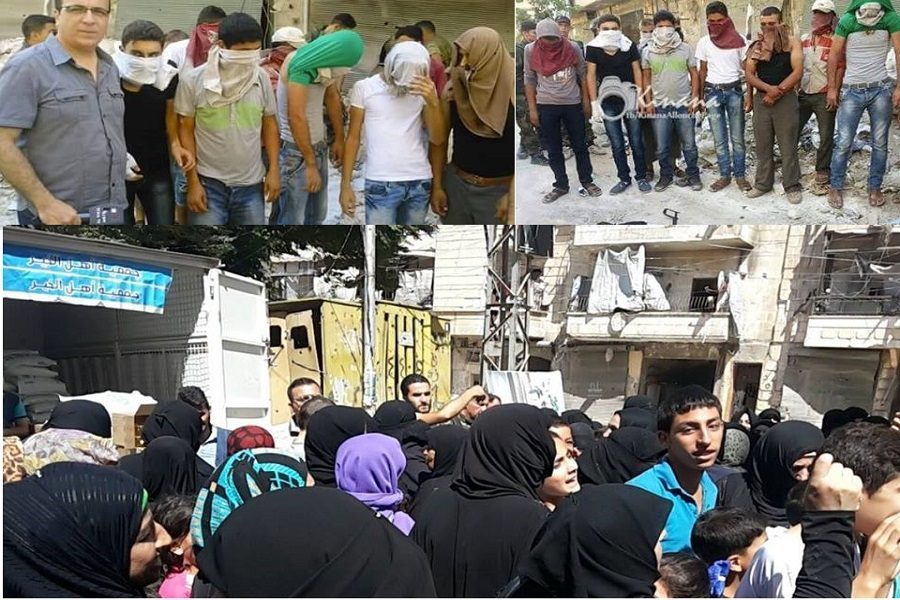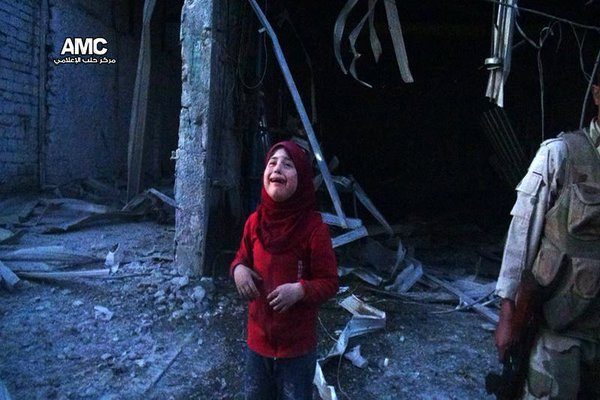
Syrian state media has said that dozens of families, as well as some opposition fighters, have started using newly opened “humanitarian corridors” to leave rebel-held parts of Aleppo, but conflicting reports from inside the besieged city have suggested that the passages have not yet been in operation.
State media broadcast footage on Saturday purporting to show civilians, mostly women and children, boarding buses to leave eastern Aleppo, in the first reported movement of people since Russia announced a plan to open up safe passages on Thursday.
“A number” of women over the age of 40 had left, in addition to the families, and were taken to shelters, according to the state news agency SANA.
SANA also said on Saturday that “armed men from eastern neighbourhoods of Aleppo” turned themselves over to army soldiers in Salaheddin district, without specifying a number, or giving further details.
Syrian state TV showed a video of a handful of supposed rebel fighters entering government territory carrying their weapons aloft, some with scarves wrapped around their faces.
“Clearly we are in the midst of a thing that we see all the time in Syria; a propaganda war that is ongoing alongside the actual war,” said Jamjoom.
The Britain-based Syrian Observatory for Human Rights also reported on Saturday that “a number” of civilians had crossed into government territory.
Freelance journalist Alaa Ebrahim told Al Jazeera he had personally witnessed hundreds of people using the corridors leaving rebel-controlled areas.
“Understandably, many people are afraid to leave and cross into other places after living for years under the control of the rebels,” he said. “Some fear prosecution, or have relatives who have been involved in some acts of violence against the government.”
Conflicting reports
The reports, however, were later contradicted by sources in Aleppo who told Al Jazeera that the corridors had not been opened, and civilians were still coming under fire.
“Everybody that we’ve spoken with, when it comes to opposition activists and residents in the rebel-held areas of Aleppo, have told us that these humanitarian corridors have not been opened,” Al Jazeera’s Mohamed Jamjoom, reporting from Gaziantep on the Turkish side of the Syria-Turkey border, said.
“Not only they have not been opened, but they say in several of the areas … in fact there is fighting still going on, and there are regime snipers as well that are shooting almost constantly.”
Sham network, one of the well-trusted opposition networks, said that the people who were said to be in the evacuation process are from the governement-held areas, and that they were all in a good state and with “brushed hair” unlike people who should be in a besieged area.
The Syrian Network for Human Rights (SNHR) said that the process was at the request of the Russian minister of defense which was followed by the current Syrian president. However, the Syrian society in areas outside the Syrian regime’s control don’t trust either of these two. If these passages were intended as safe passages for civilians, they should be supervised and executed by the United Nations and International Committee of the Red Cross with an escort team of independent journalists.
The network added that: “In SNHR, have a bitter experience with familiar cases. We documented in previous reports how the residents of Old Homs neighborhoods were evacuated. Even though the settlement was between the Syrian regime and the armed men inside these neighborhoods and under the sponsorship of the United Nations, the Syrian regime betrayed the agreement as all of the residents were arrested and interrogated with in an insulting manner. Out of 1000 individuals, the Syrian regime only released 250 as the remaining 750 individuals have become forcibly disappeared.”
The network called the passages as ” Passages for Killing and Disappearance, and they will have the same Outcome as Passages in Old Homs.”



